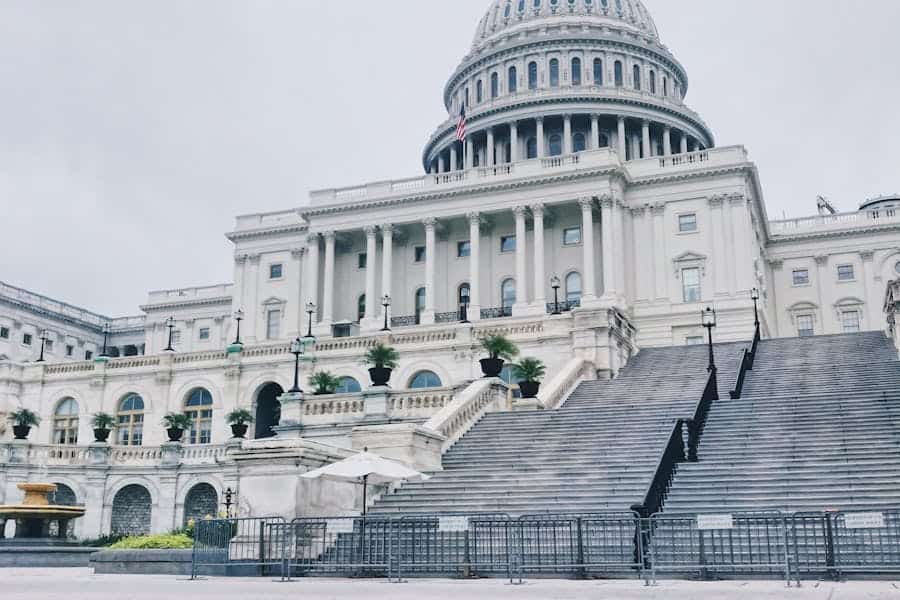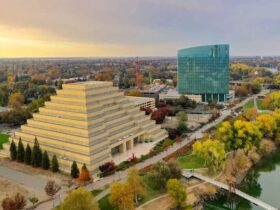Why are malls dying in America? This question has become increasingly relevant as once-thriving shopping centers face closures and declining foot traffic. The American mall, once a symbol of retail success and community gathering, is now struggling to survive. In this article, we will explore the various factors contributing to the decline of malls in the United States, examining economic, cultural, and technological changes that have reshaped the retail landscape.
Why Are Malls Dying in America?
Why are malls dying in America? The decline of malls in the United States can be attributed to several factors, including the rise of e-commerce, changing consumer preferences, economic shifts, and over-saturation of the market. These elements, combined with the impact of the COVID-19 pandemic, have significantly altered the traditional shopping mall experience.
The Rise of E-Commerce
The advent of e-commerce has revolutionized the way people shop. Online shopping platforms like Amazon offer unparalleled convenience, allowing consumers to purchase goods from the comfort of their homes. This convenience has significantly reduced the need for physical shopping trips, contributing to the decline of mall foot traffic.
E-commerce platforms often offer lower prices due to reduced overhead costs compared to brick-and-mortar stores. Online retailers can afford to sell products at competitive prices, attracting price-sensitive consumers away from traditional malls. Frequent discounts, promotions, and the ability to compare prices easily online further drive this shift.
Online shopping provides a vast array of products that may not be available in local malls. Consumers have access to a global marketplace, with countless options and niche products that traditional malls cannot match. This variety and availability make online shopping a more attractive option for many.
Changing Consumer Preferences
1. Experience Over Goods Modern consumers, particularly younger generations, increasingly prioritize experiences over material goods. The shift towards spending on experiences such as travel, dining, and entertainment reduces the disposable income allocated for traditional retail shopping. Malls, historically focused on retail, struggle to adapt to this experiential shift.
2. Desire for Unique and Local Offerings There is a growing trend towards supporting local businesses and seeking unique, artisanal products. Many consumers prefer shopping at independent stores, farmers’ markets, and boutique shops rather than generic mall chains. This preference for unique and local offerings draws traffic away from traditional malls.
3. Health and Wellness Focus The focus on health and wellness has also impacted mall traffic. Consumers are more inclined to spend money on fitness, wellness activities, and healthy living, which often do not involve traditional retail shopping. Malls that fail to integrate health and wellness options find it challenging to attract these consumers.
Economic Shifts
1. Recession and Disposable Income
Economic downturns, such as the Great Recession of 2008, have long-lasting impacts on consumer behavior. Reduced disposable income and economic uncertainty lead to decreased spending in malls. Even during economic recovery, many consumers remain cautious, prioritizing savings and essential purchases over discretionary spending.
2. Retail Industry Struggles
The retail industry has faced numerous challenges, including increased competition, rising labor costs, and supply chain disruptions. Many retail chains, including major department stores, have closed numerous locations or filed for bankruptcy. These closures reduce the anchor stores that traditionally drive mall traffic, leading to a ripple effect on other mall retailers.
3. Over-Saturation of Malls
During the late 20th century, there was a rapid expansion in mall construction across the United States. This over-saturation created more retail space than demand could support. As consumer preferences shifted and economic conditions fluctuated, many malls found themselves with vacant stores and declining profitability.
Impact of the COVID-19 Pandemic
1. Accelerated Shift to Online Shopping
The COVID-19 pandemic accelerated the shift to online shopping as lockdowns and social distancing measures limited physical store visits. Many consumers who were previously hesitant to shop online became accustomed to the convenience and safety of e-commerce. This acceleration further diminished mall foot traffic.
2. Health and Safety Concerns
Even as restrictions eased, health and safety concerns continued to deter some consumers from visiting crowded places like malls. The prolonged impact of the pandemic has changed shopping habits, with many preferring the perceived safety of online shopping or smaller, less crowded stores.
3 .Financial Strain on Retailers
The pandemic placed significant financial strain on many retailers, leading to closures and bankruptcies. Malls lost key tenants, resulting in increased vacancies and reduced appeal to shoppers. The loss of anchor stores and popular brands further accelerated the decline of mall traffic.
Adaptation and Transformation Efforts
Incorporating Entertainment and Dining
To counteract declining foot traffic, some malls are transforming into mixed-use spaces that incorporate entertainment and dining options. The inclusion of movie theaters, restaurants, arcades, and fitness centers aims to create a destination experience that attracts visitors for more than just shopping.
Embracing Technology
Some malls are embracing technology to enhance the shopping experience. Implementing digital directories, mobile apps, and interactive displays can create a more engaging and convenient experience for shoppers. Additionally, integrating online and offline shopping experiences, such as buy-online-pickup-in-store (BOPIS), can attract tech-savvy consumers.
Repurposing Space
Malls are also exploring ways to repurpose vacant retail space. Some are converting areas into office spaces, residential units, or community centers. These mixed-use developments aim to create a vibrant community hub that attracts a diverse range of visitors and tenants.
The Future of Malls
Sustainable and Community-Centric Models
The future of malls may lie in adopting sustainable and community-centric models. Incorporating green spaces, hosting local events, and supporting community initiatives can make malls more relevant and attractive to today’s consumers. Emphasizing sustainability and environmental responsibility can also appeal to eco-conscious shoppers.
Specialized and Niche Markets
Focusing on specialized and niche markets can help malls differentiate themselves. Curating unique shopping experiences, offering specialized products, and targeting specific demographics can create a loyal customer base. Niche markets, such as luxury goods or cultural experiences, can attract visitors seeking something unique.
Hybrid Retail Models
Hybrid retail models that combine physical and digital shopping experiences are likely to become more prevalent. Malls that successfully integrate e-commerce with in-store experiences can cater to diverse consumer preferences. Offering seamless online-to-offline transitions and personalized shopping experiences can enhance customer satisfaction.
Conclusion: Understanding the Decline of Malls
Why are malls dying in America? The decline of malls is a complex phenomenon driven by the rise of e-commerce, changing consumer preferences, economic shifts, and the impact of the COVID-19 pandemic. While traditional malls face significant challenges, opportunities for adaptation and transformation exist. By embracing innovation, sustainability, and community engagement, malls can reinvent themselves and remain relevant in the evolving retail landscape.
FAQs
Why are malls dying in America?
Malls are dying due to factors like the rise of e-commerce, changing consumer preferences, economic shifts, and the COVID-19 pandemic.
How has e-commerce impacted malls?
E-commerce offers convenience, competitive pricing, and a wide variety of products, drawing consumers away from traditional malls.
What role does consumer preference play in the decline of malls?
Consumers increasingly prioritize experiences, unique products, and local businesses over traditional retail shopping, reducing mall traffic.
How has the COVID-19 pandemic affected malls?
The pandemic accelerated the shift to online shopping, heightened health concerns, and caused financial strain on retailers, leading to mall closures and vacancies.
What strategies can help revitalize malls?
Incorporating entertainment, dining, technology, and mixed-use developments can help malls attract visitors and adapt to changing consumer demands











Leave a Reply